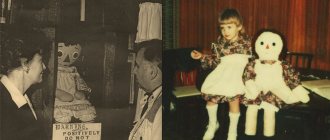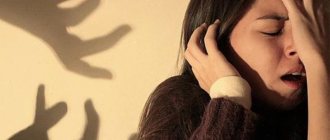Silence phobia, or silensophobia, is a person’s pathological, irrational reluctance to remain in a silent, quiet space. Such people are dependent on the outside world; they need to continuously receive auditory information: through television and radio broadcasting, listening to audio books, and talking on the phone. As soon as silence sets in, the silensophobe feels discomfort, because without receiving external information, he is forced to “digest” his own fears and experiences.
Iremophobia or silensophobia
For the first time, psychotherapists started talking about this type of fear as a disease in the middle of the twentieth century.
Millions of people who work in noisy, crowded offices, shopping centers, and factories are frightened by sudden silence and suffer from a phobia of silence. Experts quite reasonably believe that their number will grow in the near future. The situation with the disease is complicated by the fact that approximately 90% do not pay attention to the problem, trying to ignore it. Few of those who are afraid of silence turn to doctors. Some are embarrassed to discuss their phobia even with their family, ashamed of their condition. Tension and anxiety are relieved with sedatives or alcohol, destroying the body and soul. Why the phobia of silence is dangerous, what symptoms it expresses and how to get rid of it - you will learn about all this from the article.
Fear of the dark
Of course, fear of the dark is a “classic of the genre” and cannot be ignored. Since this phobia is extremely common, we are used to chalking it up to “age” and not paying much attention. But why does this fear arise? It's simple: the darkness scares kids with its uncertainty, because there is nothing in it. But a child’s vivid imagination does not stand still and comes up with eerie images. This is exactly how a “monster’s” paw emerges from an ordinary slipper, which is about to drag the baby under the bed. If a child's phobia is really strong, it is better to leave him a dim nightlight at night and patiently explain that there is no one in the room and he is safe.
Psycho-emotional and pathological causes of jeremophobia
Like other unusual, specific fears, silensophobia develops in response to traumatic shocks or situations involving a threat to health and life.
The most common reasons for developing a fear of silence:
- Childhood traumas. In order for the child to sleep soundly, parents reliably isolate his room from extraneous noise: install double and triple glazed windows, lay soft flooring, turn off the TV and other sound sources. Against the background of such all-consuming silence, any sharp sound, be it a pen falling to the floor or a door slamming, frightens the child. Impressionable kids may completely refuse to sleep in their room without the TV or other sound source on, giving silence negative associations.
- Silence as a punishment. Jeremophobia, as well as the fear of the dark or closed spaces, often develops in children who are locked in remote rooms, basements, dark closets or closets as punishment.
- Self-identity problems. Often people who lack self-confidence and suffer from a lack of realization of their own skills are afraid to remain in complete silence. They tend to keep themselves busy so as not to be left alone with negative thoughts.
- Negative associations. The fear of silence can be imposed by books and films in which moments of complete and oppressive silence are accompanied by negative events.
Fear of silence can also be a sign of serious pathologies:
- hormonal disbalance;
- disorders of the adrenal glands;
- deep chronic depression;
- schizophrenia, paranoia accompanied by audiovisual hallucinations.
Fear of novelty
Among preschool children, fear of everything new is very common. We don’t really understand the love of kids for the familiar and repetitive, but the fact remains: they are not at all bored with routine, and they are afraid of even small changes. Therefore, mom or dad's new hairstyle may well bring children's tears. Unfortunately, we do not often think about the child’s worldview and begin to scold him because he refuses to put on new clothes or go to another playground. This behavior on the part of adults is wrong. Instead of strict words, the child, on the contrary, needs the support of family members who will explain to him in each specific case that change is not scary at all.
Reasons for developing a fear of going outside
- Heredity
. Quite a large number of specialists in the field of psychiatry are confident that all neuroses should be considered exclusively at the genetic level of manifestation of a certain pathology. Based on the results of their research, it can be concluded that a fifth of the population who are afraid to go outside borrowed a similar model of behavior from their parents. Sometimes a “gift of fate” can even be passed down from grandparents. - Increased anxiety
. People with an overly excitable psyche are afraid of everything, even their own shadow. For them, leaving the house is a feat that they are not going to accomplish. If we make an analogy with animals, then a person of this type automatically turns into a turtle, which is securely hidden in its shell. - Diffidence
. People whose complexes play a dominant role over other priorities try not to leave their native walls again. In every glance of a passerby, they see disapproval and even censure, which puts such poor fellows into a stupor and even depression. This is often encountered by young mothers after childbirth, and women in adulthood who find it difficult to control their weight. People with a pronounced defect in appearance (large birthmarks, growths on the body, etc.) are also susceptible to fear. - Disability
. People with disabilities often try to isolate themselves within four walls, because this is where they feel safe. For them, the street is a high-risk zone, even if they live in a quiet rural area. - Dysfunction of mental regulation
. In some anxious individuals, biological processes in the brain malfunction. In this case, there is an imbalance of reflex functions that must be controlled by consciousness. - Expansion of the stressful situation
. A child’s fear of entering a dark room can later develop into a much more serious phobia. The expression “my home is my castle” is also beginning to be perceived by some people as an unconditional verdict. - Low social status
. In this case, we are not talking about embarrassment and fear of becoming a laughing stock in the eyes of more successful people. A person who is afraid to leave home, in most cases, simply does not want to see a higher standard of living in the society that surrounds him. It’s easier for him to close himself in “his own box” so as not to correct anything and not fight to change the situation. - An accident that occurred
. If the poor fellow became a hostage in the past or observed some kind of disaster, then he will not have the desire to go out into the street again. After suffering stress, such people become hermit crabs who feel quite comfortable in such a situation. - Definite addiction
. In this case, we are not talking about alcoholics who, in the cold and cold, will leave the house in search of a strong drink. Those same computer gamers are so oblivious to reality that even a trip to the nearest bakery seems like a feat to them. - Accompanying effect
. Some phobias in humans tend to intertwine quite harmoniously with each other. Against the background of one mental pathology, another emotional anomaly is quite capable of developing, which leads to a fear of going out. - Fear of death
. Every adequate person does not want to say goodbye to his life before the scheduled date. However, in some cases, such a desire turns into a certain mania. People who fear death every second are simply trying to make a fortress out of their home. For them, going outside is equivalent to a death sentence for themselves. - Internal dictate
. Very often, parents prohibit young children from communicating with their peers outside the walls of the house, scaring them at the same time and inventing all sorts of horror stories. After personality maturation, mature adolescents may then perceive the street solely as a threatening factor.
Treating the fear of silence
But self-medication is not always able to cope with the phobia of silence. In many advanced cases, you cannot do without the help of a specialist. Irrational fear can be treated with medication and psychotherapy. Everyone has their own fears and weaknesses. You shouldn’t try to hide them, be ashamed, or ignore them. It's easier to accept and fight.
Psychological help
The first stage of treatment is contacting a psychotherapist. The doctor will find out where the fears come from, how long ago they have settled in your brain, and prescribe a course of treatment.
Professional techniques of neurolinguistic programming or hypnosis relieve the psyche of anxious panic moods and speed up the recovery process. Cognitive behavioral therapy and systematic desensitization help cope with anxiety.
Art therapy methods are used to combat phobias. Drawing, sculpting, and creating photo collages promote personal self-expression by correcting mental processes. As a result of psychotherapeutic treatment, the phobia of silence decreases in size, and ways of human behavior that are adequate to the situation and the corresponding preconditions for anxiety are formed. Group and individual forms of classes are used.
All these treatment methods help to clarify the origins of the fear of silence, analyze them, and allow you to overcome the phobia once and for all.
Medication methods to combat silensophobia
Most often, drug therapy is used to get rid of the fear of silence. 1. Tricyclic antidepressants are used to combat depression: Moclobemide, Sertraline, Fluoxetine. Neurotransmitters, which are part of the drug, effectively restore the psyche. 2. For panic attacks, benzodiazepines are prescribed: Imiprapine, Phenazipam, Alprozolam. 3. To eliminate problems of the cardiovascular system caused by phobia, beta blockers are used. 4. Psycholeptics, in particular Busporin, reduce anxiety. All sedatives consist of components of plant origin, but you should not take them yourself, since the wrong dosage can be dangerous to health and cause harm instead of benefit. Only the attending physician is able to take into account all the pros and cons of using medications and select the ones that are suitable for the patient.
Psychological assistance to the patient
A psychologist and psychotherapist are specialists who can help a patient without the use of drugs. You can get rid of a phobia using specially developed methods, including conversations with the patient (to determine the cause of the phobia of silence), subsequent analysis of information and interpretation of the content of the problem itself.
Professional methods can speed up the patient’s recovery process and completely rid his psyche of obsessive problems. Methods of neurolinguistic programming and even hypnosis can be used. The choice of method and its effectiveness depend on the severity of the disease and the qualifications of the specialist.
Art therapy methods also received special credit in the fight against phobias. The fact is that art is the most convenient way of personal expression, transmission of problems and phobias. Art therapy has earned particular popularity in working with children. The process of mental correction using this method is based on the following areas of working with phobias:
- image;
- verbalization;
- expressive dramatization.
The use of drawing, modeling, creating photo collages, etc., allows you not only to find out the main reasons for the fear of silence, but also to partially realize it in your creations.
The result of the psychotherapist’s work is to formulate adequate ways of human behavior and the preconditions for anxiety.
Work with the patient can be based on both group and individual sessions. Group classes are less effective. They are used more often to familiarize a specialist with the psychological health of the patient. The patient also gets used to the new requirements and rules that the doctor sets for him. Individual lessons are more effective. As a result of working with the patient, the doctor determines negative trends in the patient’s personal development and behavior. Based on the results of the meetings, therapeutic work is built.
Definition of a phobia of silence
Fear of silence can be called differently: in literature it is often found under such designations as silensophobia and jeremophobia.
Under the influence of his emotions, silensophobe falls into a state of deep anxiety and panic. When a phobic disorder is severely neglected, it is unbearable for a person to be in any situation that requires silence: when taking a written test, visiting a library, etc.
Often the phobia of silence is complemented by the fear of loneliness. Filling the “ether” with the endless sounds of radio, music, TV, conversations, video games, a person tries to cope with the fear of being left alone.
The technological revolution has irreversibly changed the world. Now life does not allow a person to remain in a sound vacuum for a second: background noise fills all spheres of his existence. If a silensophobe is “snatched” from his usual noisy life in a metropolis and sent to a deserted environment, for example, a protected area or a lonely house in the forest, this will cause him deep psychological trauma.
Are we afraid of silence?
A person is constantly exposed to emotions, even when alone. Its negative form can even be obtained from the influence of one’s own thoughts, which manifest themselves when a person is left alone with himself. In the presence of a phobia, the patient experiences discomfort from a strong attack of emotions, which by their nature perform adaptive functions. The human psyche cannot independently cope with the manifestation of emotions, which leads to stress. The phobia itself, like chronic stress, is acutely manifested when the patient is in unfavorable conditions - a stressful background.
Many people suffer from silensophobia, and more than 90% of them are unaware of their psychological problems. A phobia prevents a person from working, communicating with loved ones and making any plans. After all, even trips to nature on weekends or vacations will not bring pleasure. A person will try to engage himself by talking, listening to music, etc. The human psyche is constantly in a tense state, and without the help of a psychotherapist, such problems can cause serious health problems. The use of sedatives relieves signs of phobia only temporarily.
Treatment of silensophobia
Fear of silence can be managed if it is not caused by mental illness. To cure, psychologists recommend assessing the scale of the problem. It is necessary to analyze the frequency of episodes and the circumstances that caused the attack of phobia.
The following techniques are effective in combating silensophobia:
- Meditation. It is necessary to instill the understanding that absolute silence does not exist in the world. This will gradually lead to the realization that there is nothing to be afraid of. In this case, it is necessary to limit sound sources. For example, stop sleeping with headphones on or turn off the TV before bed.
- Silent reading or aromatherapy are effective means of combating phobias.
- Deep breathing. Take a comfortable position, close your eyes and relax. Take a deep breath. Then imagine how all the fears and tension come out along with a slow exhalation.
- A good technique would be to express your own fears in painting.
In case of severe manifestations of the disorder that impair psychological health, the help of a psychotherapist will be needed. Treatment uses hypnosis and drug support.
The use of medications gives a temporary effect. After stopping the treatment, the fears return. Medicines are used for auxiliary therapy against the background of the main treatment. In different cases, antidepressants and psycholeptics are prescribed. Beta blockers are used to support the functioning of the heart and blood vessels.
I like the article I don’t like the article
Self-analysis as a way to combat jeremophobia
If the fear of silence is not supported by serious mental disorders, it is quite possible to cope with it through your own efforts.
The first step is to outline the scale of the problem. It is necessary to find out the frequency of episodes of fear and the conditions under which they arise: this will help answer the main question “why are we afraid of silence?”
It is important to stimulate the thought process: as soon as a person, shackled by fear, begins to think logically, it becomes easier for him. You need to understand that absolute silence does not exist: life is a continuous movement, accompanied by sounds, noises, voices, etc. If silence as such does not exist, then there is no fear of it.
After this, it is necessary to stop continuous sound exposure: limit the time you work at the computer, turn off any sound sources before going to bed, and do not sleep with headphones.
Methods for self-cure from silensophobia:
- meditation;
- aromatherapy: you can light scented candles and take a bath or just read in silence;
- deep breathing practice. The exercise is performed as follows: take a comfortable position, close your eyes, relax and take a deep breath, after which we exhale the air as slowly as possible. While performing a breathing exercise, it is necessary to visualize how fears and worries leave the body with exhalation;
- visualization of fears using painting.
How to get rid of the fear of the dark?
Various techniques have been developed to overcome the fear of the dark. But it all depends on the severity of the problem and personal characteristics. If a person is practically not worried about such a phobia and does not affect his daily life in any way, then it is possible to cope with fears on his own.
The rules of conduct are simple but effective:
- watch less news and horror movies;
- communicate with positive people;
- walk and spend free time “in the open air”;
- relax and exercise the body physically;
- create a pleasant environment and bright interior.
Extreme isolation
While in prison, a person still knows that perhaps he will someday be released. Hope and purpose help him overcome loneliness even in the punishment cell. But it is more difficult to maintain sanity for those who are left under the rubble, lost in the catacombs or underground caves.
If you went to the mountains, live in an area with high seismic activity, or live in an emergency building, remember how to behave if you suddenly find yourself under rubble:
- Do not make sudden movements.
Do not try to pull out a limb stuck under the rubble. This can provoke an even greater collapse. - If your phone is intact, use it.
Try dialing the emergency number. If there is no connection, check if the built-in flashlight is working. Try to save the battery and turn on the flashlight periodically to spend a little time in the light or to give a signal. - If you have any metal object, move it, move it from side to side.
This will help the rescuers' metal detector find you faster. - Vote periodically
. Every hour, rescuers announce a time of silence so that the voices of people under the rubble can be heard. - Try not to give in to negative thoughts.
In such a situation, a lot of stress hormones are released in your brain. They create panic. Your task is to remain calm and occupy your brain with some mental task. The less you panic, the longer you will hold out and the more likely you are to be rescued.
Interesting fact
Aftermath of the 2010 Haiti earthquake boston.com
Reasons for the development of the disorder
Technical devices are constantly present in the life of a modern individual. Background sounds fill every second of human existence. Persons with a fear of silence cannot remain calm in a lonely hut in the middle of the forest or in protected areas.
This situation makes them uncomfortable. Today many people face a similar problem. The question of what the phobia is called - fear of silence - and why it occurs is quite relevant. Experts say that the phenomenon is associated with negative or dangerous events.
The most common causes of the disorder are:
- Severe fear in childhood. Many caring mothers and fathers try to protect their sleeping baby as much as possible from sound stimuli. They make double glazing, install soft coverings on the floor, turn off the radio. In the absence of noise, even the dropping of a pencil or the creaking of a door can cause a feeling of fear in a child.
- Using isolation from sound stimuli as punishment. The fear of silence develops in children who were locked in basements, pantries, closets, and dark rooms.
- Associations. They are often associated with reading books or watching horror films in which, after a long absence of sound stimuli, frightening events happen to the characters.
- Personal problems. Lack of self-confidence and inability to realize aspirations leads to the fear of being left alone. In this situation, a person tries to fill the void and cope with the flow of negative thoughts. To do this, he turns on the TV or music, talks on the phone.
Basic rules for getting rid of a phobia on your own
Self-medication for the fear of silence also has its power. The main thing is to know the main directions of therapy. Psychotherapists often advise patients:
- Realize your problems. The main thing is not to be afraid of silence and perceive it as a normal psychological background. This will help you get started in the fight against your phobia.
- Meet silence more often. You can overcome your problems only by meeting them more often. Psychotherapists call this method “reaction burnout.” The fact is that, constantly encountering a phobia, a person gradually gets used to it, since defensive reactions also intensify.
- Get rid of tension. With any manifestation of anxiety, it is important to learn to control yourself and relax in a timely manner. You can use deep breathing techniques, meditation and even muscle relaxation. And yoga can help prevent obsessive thoughts.
- Learn to control your own thoughts. The phobia of silence is constantly fueled by negative emotions that arise during thought processes. By learning to control yourself and the “direction” of your thoughts, you can avoid the signs of silensophobia.
Psychologists advise realizing your phobia by creating certain objects and images. The easiest way is drawing. In moments of anxiety and other signs of silensophobia, creating a drawing will help a person express his emotions and give free rein to his feelings. In addition, this is a good way to understand the nature of your illness. There are methods that transform the problem expressed by visual art into something humorous and caricatured. Such work also has advantages - the phobia ceases to have a strong influence on the person, he learns to control it.
A person’s internal resources are sometimes stronger than his physical capabilities. Thus, in patients with silensophobia, silence even causes problems with sleep. By putting on headphones or turning on the TV, the patient creates for himself a comfortable psychological background of involvement in the world. Having lost it, a person suffers. Therefore, initial work on a phobia is based on working with a psychological problem without barriers or interference. Only by facing your fear “face to face” can you defeat it.
Fear of external noises
It is natural for a person to be afraid of loud sounds, to shudder and look back in the direction of the noise. This is a defensive reaction to exposure to a sharp external noisy stimulus. The reflex is developed from birth: a newly born baby reacts to external noise by spreading its legs and arms in different directions. Fear of noises is normal unless it becomes an uncontrollable phobia. It is also called ligyrophobia and acousticophobia. Sometimes these terms are used as synonyms, although there are inconsistencies. Literally translated, phonophobia is the fear of loud sounds. Acousticophobia is auditory-coordinated fear. Ligyrophobia is the fear of extraneous noises and devices that produce them.
Humans react to loud noises from birth
Fear of animals
Not all children are crazy about cats and dogs. This is usually associated with some kind of traumatic experience from deep childhood. Although it is possible that the child is simply frightened by teeth and claws. As a rule, such a phobia applies to a specific type of animal, for example, rodents. Such a fear can be overcome if you often read fairy tales to your child where these animals are involved, and watch documentaries about them (suitable for children). Just don’t try to do “shock therapy” and just bring the animal into the house.
Reasons for appearance
Like all specific phobias, fear of silence is usually triggered by traumatic or adverse life situations.
Scientists identify several main causes of iremophobia:
- Children's fears Parents' attempts to provide silence for a sleeping child can be interrupted by an unexpected sound, which causes anxiety and gives rise to an unconscious association with something incomprehensible and scary.
- Silence phobia arises as a result of child punishment, when cruel parents lock their children in basements, closets, dark closets
- Fear of oneself Insecure people suffering from an inferiority complex, left alone, are afraid of the opportunity to evaluate their thoughts and actions
- Public places The absence of sounds instills a pathological horror in a person, the roots of which grow from emotional memories of silence as a harbinger of sudden troubles. Technology. Telephones, televisions, computer clubs, smartphones with many sound functions have become an integral attribute of life.
- Watching Movies Quite often in movies, the climax is preceded by a “deafening” silence, followed by something terribly tragic.
- Uninhabited natural environment The absence of background noise in forests or other uninhabited areas is associated by individuals with the existence of evil spirits who come out in silence to hunt people
Other reasons for aversion to silence include abnormalities in the functioning of the adrenal glands, hormonal imbalance, depression, and delusional paranoia.
The fear of silence is associated with other fears. Modern man is inextricably linked with society, playing a certain social role on the stage of life. And when even the slightest change occurs in the established order of things, discomfort sets in.
Signals of more complex problems
- unwillingness to realize your loneliness;
- fear of being alone with your secret experiences;
- inability to cope with surging emotions.
Silence puts pressure on the psyche, and in order not to “listen” to it, a person turns on the TV, calls friends, puts on headphones, protecting himself from disturbing worries with the sounds of music.
The phobia of silence forces you to constantly be busy with something. Even before going to bed, the patient does not want to disconnect from the outside world - he watches a movie, listens to radio broadcasts.
Causes of silensophobia
Psychologists often associate the fear of silence with other fears. The fact is that a person is constantly in contact with others, talking on the phone, listening to music, watching movies, etc. It is from these little things that life and the social role of people are built. These are like established rules, the violation of which a person feels discomfort.
That is, silensophobia itself is a psychological sign of more serious problems.
Psychologists are confident that such problems arise:
- when you refuse to realize your loneliness;
- due to fear of being left alone with your thoughts;
- due to emotional turmoil experienced.
Common phenomena of modern life allow a person to escape from some of his own problems, forget about the past (or not think about the future). Therefore, psychologists often draw parallels between the feeling of silence and the perception of one’s own problems. When it becomes quiet around a person, he is left alone with his own thoughts and often the individual’s psyche is not ready for this. With such “communication,” a person feels discomfort and tries in any possible way to get rid of it (turns on the radio, TV, talks on the phone, etc.).
A person may also feel anxious during periods of silensophobia due to loneliness. Akin to the fear of perceiving oneself, one’s experiences and problems, a person tries to dilute his life with sounds. Such people often have many acquaintances with whom they try to constantly keep in touch. And in their free moments, they prefer to watch TV or spend time listening to music on headphones.
The emotional shocks experienced, which can cause the manifestation of a phobia, vary from person to person. Often, problems begin in early childhood, when caring parents try to ensure complete silence at night while their child is sleeping. A phobia arises from sharp sounds (unexpected phone calls, creaking doors, rattling dishes, etc.). Such little things can have a detrimental effect on the child’s psyche. In addition, signs of a phobia may appear in adulthood.
Symptoms of fear of silence
Silence phobia is accompanied by the following physical signs:
- weakness, dizziness;
- pallor of the skin caused by narrowing of small arteries in the skin;
- tremor of the limbs;
- hyperhidrosis: especially the palms and head sweat, while the skin remains cold to the touch, the person may feel chills;
- increased heart rate;
- dry mouth, feeling of jaw stiffness, possible loss of voice;
- panic attacks;
- accelerated shallow breathing: a person may feel as if he is suffocating;
- nausea, urge to vomit;
- muscle spasms.
At the psychological level, attacks of jeremophobia are accompanied by the following symptoms:
- feeling lost, useless, thoughts of suicide;
- inability to think logically;
- disorientation;
- the desire to hide (both from other people and from oneself, one’s thoughts and fears).
How to define silensophobia?
Silensophobia manifests itself over a long period of time—months or even years. In the absence of apparent reasons for concern, a person may experience severe psychological discomfort. The fear of silence can appear unexpectedly, in the most trivial situations.
With each new episode, the fear becomes more intense: from mild tension and anxiety it develops into deep panic. This greatly affects the quality of a person’s personal and social life and disrupts his mental and physical health.
Fear haunts a person continuously, which forces him to constantly look for something to do. He experiences special pressure from silence at night: in order to fall asleep normally, a silensophobe needs to turn on music, a movie or an audiobook.
Signs of a phobia
The manifestation of silensophobia can be characterized by both physiological, behavioral and mental signs. The consequences of silence, the absence of extraneous sounds, even before going to bed, can be:
- sudden panic;
- headache and dizziness;
- insomnia;
- chest tightness and increased heart rate;
- attacks of nausea;
- muscle tension.
Often, when the patient is left in an empty, silent space, other problems appear. A person may think about problems at work, about relationships with others, and even about his own death. He transforms his anxiety into a negative psycho-emotional background, the consequence of which can be prolonged depression.
Symptoms and manifestations
How to identify iremophobia
You can determine the development of pathology yourself. The main symptom that distinguishes the fear of silence is that the phobia manifests itself over a long period of time, over several months and even years. Psychological discomfort arises suddenly, in everyday life situations, but does not disappear, but, on the contrary, increases. A person is haunted by an insurmountable reluctance to remain in silence, nervousness develops into causeless panic, and there are no visible reasons for this state. Life becomes unbearable, there is nowhere to hide from fears and dark thoughts.
Rationalization. Getting rid of the fear of silence on your own
If panic hits you and takes you by surprise, you need to take a deep breath, calm down, and begin to rationalize what is happening in order to determine the severity of the anxiety. Any type of fear goes away if you carefully analyze it and understand what really happened
As in every business, it is important to take the first step - mentally put everything into categories, sort it and answer the question for yourself: “Why does silence frighten me?” When we begin to think actively, a psychological revolution occurs in the brain. The problem turns from a global one into a small misunderstanding that is easy to fix
The second equally important step is to create conditions that can destroy the shell in which the phobia of silence hides in order to stop being afraid.
We need to stop constantly looking for the source of noise:
- do not sit for hours at the computer, distracting yourself from loneliness;
- do not turn on the TV in the bedroom before bed;
- do not sleep with headphones, listening to music, lectures, audiobooks.
Self-hypnosis has not only destructive, but also creative power. The main thing is to realize the problem, begin to perceive silence as a natural psychological background, and encounter it more often. You need to teach yourself to relax in a timely manner, get rid of tension, and control your emotions and experiences. Deep breathing techniques, muscle relaxation, and meditation help with this.
This exercise is beneficial: sit or lie down comfortably, completely alone, close your eyes, inhale deeply, exhale slowly for at least 10 minutes. Along with the air, worry and anxiety leave the body, the fear hidden in silence disappears, and happiness settles in the freed space. Yoga classes prevent the appearance of obsessive thoughts.
You can avoid the signs of iremophobia by visualizing fear - embodying your feelings and anxieties in drawings. Each sound has its own physical form, size, color. The world is full of sounds, they are born every second, and complete silence is just a myth, a fantasy that does not exist in reality. Family members can play an important role in overcoming the fear of silence. Talking about a phobia with a loved one can provide significant support and assistance. Having gotten rid of the fear of loneliness in silence, you can enjoy all the delights of life.
Is it possible to determine the presence of a phobia on your own?
The main sign by which silensophobia can be determined is the duration of its manifestation. Unlike the usual sudden psychological discomfort that appears in certain life situations, people with a phobia may be subject to its symptoms for several months or even years. But, most often, experiencing anxiety, suffering from insomnia, and even depression, the patient does not understand the reason for his negative psychological background.
Silensophobia can only be recognized by the following signs:
- the presence of a phobia is confirmed when a person systematically refuses to remain in silence;
- if nervousness often turns into a panic attack;
- the impact of unpleasant symptoms affects everyday life.
The main thing is to contact specialists when identifying psychological problems. Most phobias can be treated with or without medication.
Causes of loud noise phobia
Attempts to hide your condition from others only intensify the manifestation of symptoms. As the stimulus is eliminated, the internal state normalizes and manifestations of fear of loud human sounds disappear. The causes of this disorder can be caused by a childhood fright or an incident at a noisy crowded event with serious consequences.
At an early age, tragic events might be remembered by the sound of sirens or music at an ill-fated concert. In the future, the unprocessed psychological trauma will remind itself when a similar sound environment is repeated.
Chronic stress, vegetative-vascular dystonia, neurasthenic diagnoses can also become conductors of phonophobia.
In addition to the psychological component, fear of loud sounds can occur with rabies, a dangerous viral disease.
The development of this pathology is facilitated by suspicion, excessive emotionality, and a prolonged state of nervous tension. The resulting depression, lack of moral strength, and even falling into alcohol or drug addiction is the other side of phonophobia. Therefore, the question of treating or letting everything take its course is not worth even thinking about.
Manifestations of phobia at the physiological level
The feeling of fear provokes not only mental disorders, but also disorders of the functioning of various organs and systems. The absence of sound stimuli causes discomfort. A panic attack leads to the following symptoms:
- Headache.
- Muscle tension.
- Paleness of the skin.
- Feeling overwhelmed.
- Dizziness.
- Profuse sweating.
- Feeling chilly.
- Acceleration of heart rate.
- Feeling of nausea, dry mouth.
- Trembling of limbs.
- Feeling of muscle stiffness.
- Feeling of lack of air.
- Discomfort in the gastrointestinal tract.
Symptoms of fear
Iremophobia or silensophobia is the fear of silence. People who suffer from such fear cannot remain for a moment in a place where there are no sounds. This sound could be a conversation, music, or the TV on.
The fear of silence constantly forces a person to be in search of some kind of activity. Even when a person is getting ready for bed, he is unable to disconnect from the outside world. There is a desire to watch a movie or listen to music. Pronounced symptoms include:
- increased sweating;
- dry mouth;
- trembling in the body;
- dizziness;
- strong internal tension;
- increase or decrease in body temperature;
- loss of ability to think clearly;
- severe panic attacks.
Symptoms
“Fear makes a person rush from the frying pan into the fire.” Aesop
The prospect of plunging into one's inner world frightens a silensophobic person, causing a panic attack.
Externally, the fear of silence is manifested by physiological signs:
- dry mouth;
- trembling in the body;
- cardiopalmus;
- dizziness;
- stomach upset;
- sweating;
- muscle tension.
Patients suffer from insomnia, headaches, chest tightness, and nausea.
Silence phobia is also characterized by psychological symptoms:
- feeling of emptiness;
- the appearance of thoughts about death;
- desire to run away, hide;
- inability to think.
The negative energy generated by anxious thoughts about the futility of life results in persistent depression. And in this state, a person is ready to commit unpredictable acts if he does not begin intensive treatment.
How to overcome fear of people?
If you are wondering how to overcome your fear of people, there is only one way out - psychological and medical treatment. There is no specific treatment for anthropophobia alone. Hypnosis works well in the treatment of any phobias, as the trigger of the phobia is removed.
Of course, treatment varies from person to person and is based on the severity of the phobia. Common forms of treatment include various types of therapy, medication, and relaxation techniques.
Therapy is extremely helpful in treating phobias, especially when combined with other forms of treatment. In addition to "just talk" therapy, healthcare providers will also work with patients through cognitive therapy until the fear response is completely eliminated. Cognitive therapy directly identifies anxious thoughts and attempts to replace them with rational and positive thoughts.
This can be helpful for people who suffer from certain phobias, as their fears may be unfounded. Relaxation training is extremely beneficial for people suffering from the effects of anxiety. This type of training includes the use of breathing exercises, hypnosis, and guided imagery.
Relaxation training can help alleviate both the emotional and physical reactions that occur in response to phobias. The individual is also taught to use coping skills to redirect the stress response.
Medication treatment is the right option for those suffering from excessive anxiety caused by a phobia. But medications do not cure phobias. It only helps relieve symptoms that are felt physically or emotionally.
For example, a person may have a fear of birds. They may be prescribed anti-anxiety medications or beta blockers when they have to face their fears.
It is important that only renowned and professional doctors recommend medications for patients suffering from phobias. Drug treatment may be harmful for some people, so it is important to answer any questions the psychologist may have about your past emotional or physical well-being
Fear of doctors
For the vast majority of children, a visit to the doctor is accompanied by fear. But for some, this feeling develops into a real phobia. Such children do not even allow people in white coats to touch them and throw tantrums as soon as they enter the doctor’s office, if not earlier. Indeed, in childhood, everyone is afraid of pain and panics at the sight of needles. It is difficult to explain to kids what a “necessary health procedure” is, and a trip to the hospital seems to them like a wasted torment.











